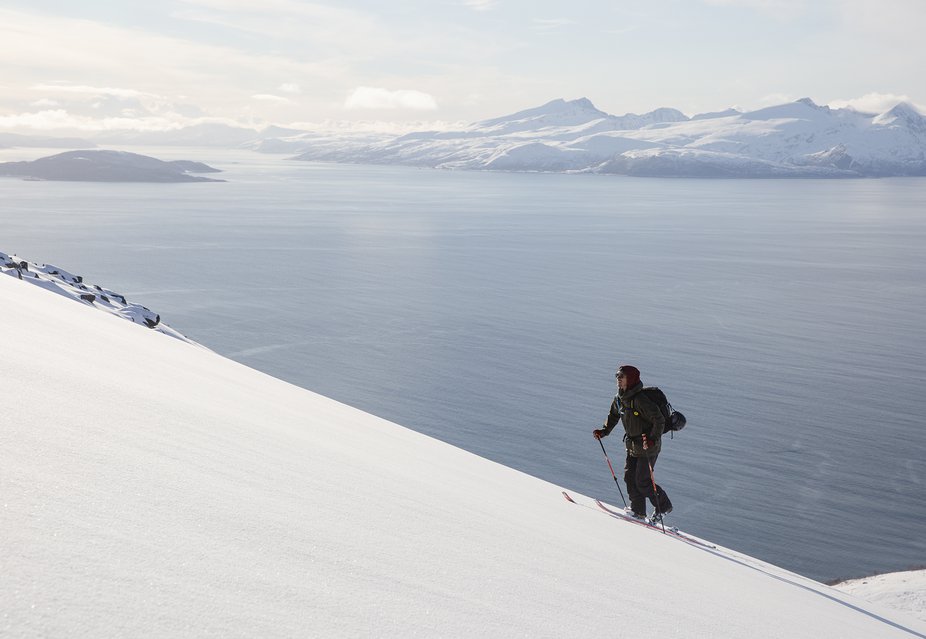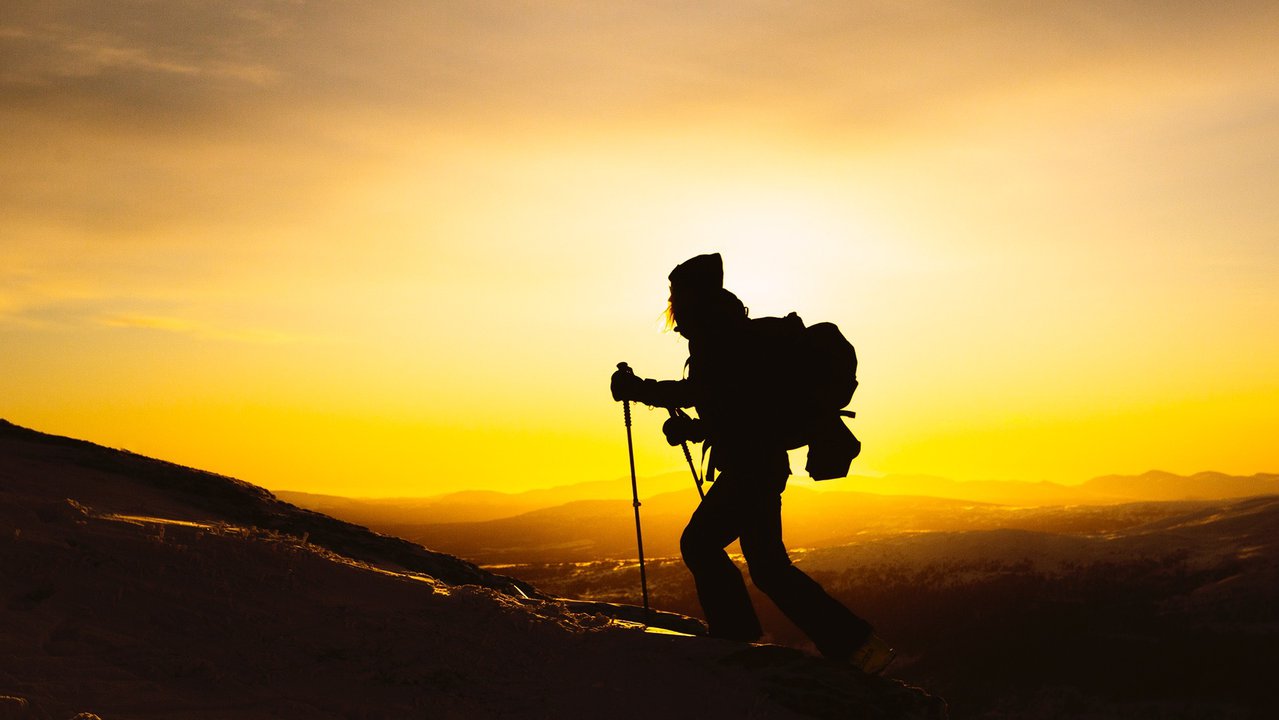Cover photo by Sofia Sjöberg
It's generally not that easy to reduce your carbon footprint and travel is an especially difficult area for skiers. Most people need to travel to go skiing to some degree, be it a drive to the hill or even a flight to some more distant destination. Some places have better infrastructure for travel in “greener” ways but we likely all use a lot of our carbon budget getting around. Yet there are some obvious reductions that can be made, and of course, there are some innovative solutions too which we'll take a look at later on.
By far the most damaging aspect of travel to the environment is the burning of fossil fuels. So the solution seems easy, let’s just go electric! Problem solved. End of article.
Unfortunately, cold weather is pretty essential to create and maintain the snow that we love so much. And those low temperatures aren’t usually too keen to cooperate with batteries, as anyone who tries filming on a particularly cold day tends to find out. In an interview, with wired.com, Anna Stefanopoulou, Director of the University of Michigan’s Energy Institute. Says that “batteries are like humans.” By that, she means that they perform best in the same sort of temperature range as humans.
Anything below 40 or above 115 degrees Fahrenheit and they’re not going to deliver their peak performance. They like to be around 60 to 80 degrees. As the temperature drops, the electrolyte fluid inside the battery cells becomes more sluggish. “You don’t have as much power when you want to discharge,” says Stefanopoulou. “The situation is even more limited when you want to charge.”
Despite these issues, PistenBully recently introduced the 100 E, a zero-emissions snow groomer. They claim that it’s the world’s first all-electric snow groomer.
A 100 E uses a 126 kWh, 400V battery. PistenBully claims the vehicle gets a 75% charge in 5 hours, and a complete charge in 6.5 hours. This gives the 100 E an average driving time of 2.5-3 hours. The first 100 E is not even available for sale yet, but the tests have gone well. Venturi Automobiles is a Monaco-based company have successfully developed “the Antarctica” an eight-wheel drive electric vehicle that was built for scientific research and exploration in Antarctica, with the specific purpose of use on polar missions. The Antarctica has successfully operated in temperatures as low as -30°C, and could, in theory, go as low as -50°C.
Swedish freeskier, Jacob Wester, is one skier who has been doing his utmost to walk the walk of reducing his carbon footprint while continuing to have a professional career for some time. A major focus has been diet, but he's also hugely reduced his air-travel mileage. He tells us more about what he thinks the short term future:
“Of course, we can’t stop traveling forever, or entirely. But a lot of skiers could re-examine the way they look at skiing and what they really need to create the feeling that we all want, that of sliding down a mountain. Most people can look at the options way closer to them. Maybe re-assess whether it’s worth going across the Pacific to Japan, just to get another foot of powder. You can probably find something closer that has good powder and has trees.”
https://www.instagram.com/p/B7HOk8WnEGT/
Jacob was actually driving an electric car for a while too: “They’re epic, you just have to plan your route a little better, but there’s always somewhere to fill it up and it takes a little longer to get there. I don’t know what the future of batteries in cold climates is or if the sourcing of the batteries will ever be truly sustainable. I know that Tesla’s perform 30-40% worse in the North of Sweden or Norway, where you can get -35° easily in the winter. That just kills the range, but we’re constantly progressing in that field."
"For now, you can go travel to ski, but it’s just not sustainable to look at traveling the globe as some kind of human right. Until we figure out a more efficient way of moving people around, maybe have a look at your surroundings instead. At the same time planes are becoming a lot more fuel-efficient. Some people think that commercial air travel is the biggest contributor to global warming before they even look at the numbers.”
Maybe we'll be able to fly more efficiently soon, but for now, finding a new appreciation for your surroundings is a great way to reduce your footprint. The Bunch and other crews are doing just that, filming mostly locally, and reducing long-distance air travel wherever possible. They're lucky to be based in Europe where trains are far more common and practical. Twig, the NS editor, spent several winters based in the snow and mountain free UK, doing all of his ski and work-related travel in Europe by train.
"It's actually surprisingly easy, especially with interrail," he tells me. "You just buy a pass, which costs a little more than a return flight for 5 days usage within a month, and then you're on your own timetable. On one pass, I went to 2 resorts in Switzerland, then up to Kimbosessions in Sweden, and back to Zermatt for their spring sessions. And with the train, you don't have to worry about annoying stuff like whether your bag is under the weight limit. For me, it's a better deal and a more pleasant experience, even without factoring in the carbon emissions."
https://www.newschoolers.com/videos/watch/866818/Baltic-Ski
Good Company hit the streets on public transport in Finland
_
"The major problem is how much carbon dioxide do we allow to emit per human for this planet to stay in equilibrium," Jacob tells me. And of course there’s a lot of different standpoints there. One person who definitely has looked at those numbers is, Protect Our Winters founder, Jeremy Jones. For him to take to the skies, he has to make it worth it.
“If you do the math on flying, it’s significant. Me, personally, if I’m getting on a plane, I try to get the most out of that trip. My snowboarding has really been based on that for a long time. I’ve never been a storm chaser and been like: ‘it’s gonna be good for a week, I'm going!’
I would spend all winter in the US and then go to Alaska for a month, or if I were going to Europe, I’d want to go for a minimum of three weeks.”
Doing fewer trips and making them “grander” is Jone’s approach to it.
“In North America, if you compare driving to flying or what have you. My focus has been driving distance from my home. A day’s-drive. I live in the West, so new mountains for me, with opportunities for a grand adventure, are massive within a 12-hour-drive of my house. That’s been my focus in snowboarding. Just try to understand the impact and really think before you get on a plane.”
There is more to ski travel than electric cars and planes. Mark Abma says that some of the eco-friendly methods of travel can actually be more fun and social.
“I know that between Vancouver and Whistler, we do have a bus system. We don’t have a train here, unfortunately, but there are a lot of shuttle companies. If you don’t have or don’t want to use a vehicle of your own, you can just hop on the bus in the morning, with 20,30,40 other people, and get to the ski resort that way. It’s an effective way to get the ski hill and it’s a fun way to get to the ski hill. You’re hanging out with a bunch of other people; you’re watching ski and snowboard videos.”
Abma’s also lucky enough to have a truck that runs on vegetable oil “old deep-frying oil from the restaurant—so that definitely reduces emissions and I also have an electric car.”
We can’t all have alternatively fuelled vehicles to get us to the hill. In Europe, there may be more alternative methods in place, with trains a viable option, buses and even carpooling making an impact.
Of course, there's the matter of getting up the hill too. COVID-19 and the closure of many lifts, all over the world, has increased the numbers of people touring, showing that ski resorts are not the only way. I live in Le Tour, at the top of the Chamonix valley, and on the weekends the car park is almost as busy as in a normal season. Let’s ignore the emissions of all those cars, but everyone is getting up the mountain under their own power. It’s the same the world over, where allowed and without lift services. There are of course problems with the sudden influx of backcountry enthusiasts (safety and increased avalanche risk, amongst others), but touring is no longer a niche activity. A report in Powder mentions stores in Golden and Jackson Hole selling out their entire inventory of climbing skins in the first lockdown. Maybe you bought a pair? All the backyard setups we see every summer? They work with snow on the ground too. Street skiing is generally pretty low footprint too, especially if you forgo the winch. You can even take a bus to the spot half the time. Newschoolers, more than most, don’t necessarily need a lift to ski.

Photo by Sofia Sjöberg
_
No one’s asking you to abandon all modern comforts and never emit a gram of carbon, but there are plenty of ways that you can make a big reduction if you're willing to adapt to be a little bit more sustainable.
_
Thanks for reading and let us know in the comments if you have any more suggestions to travel more sustainably!
The next - and final- part of the How to Ski more Sustainably is tips from the people that ski for a living including Mark Abma, Henrik Harlaut, Eric Pollard and many more


Comments